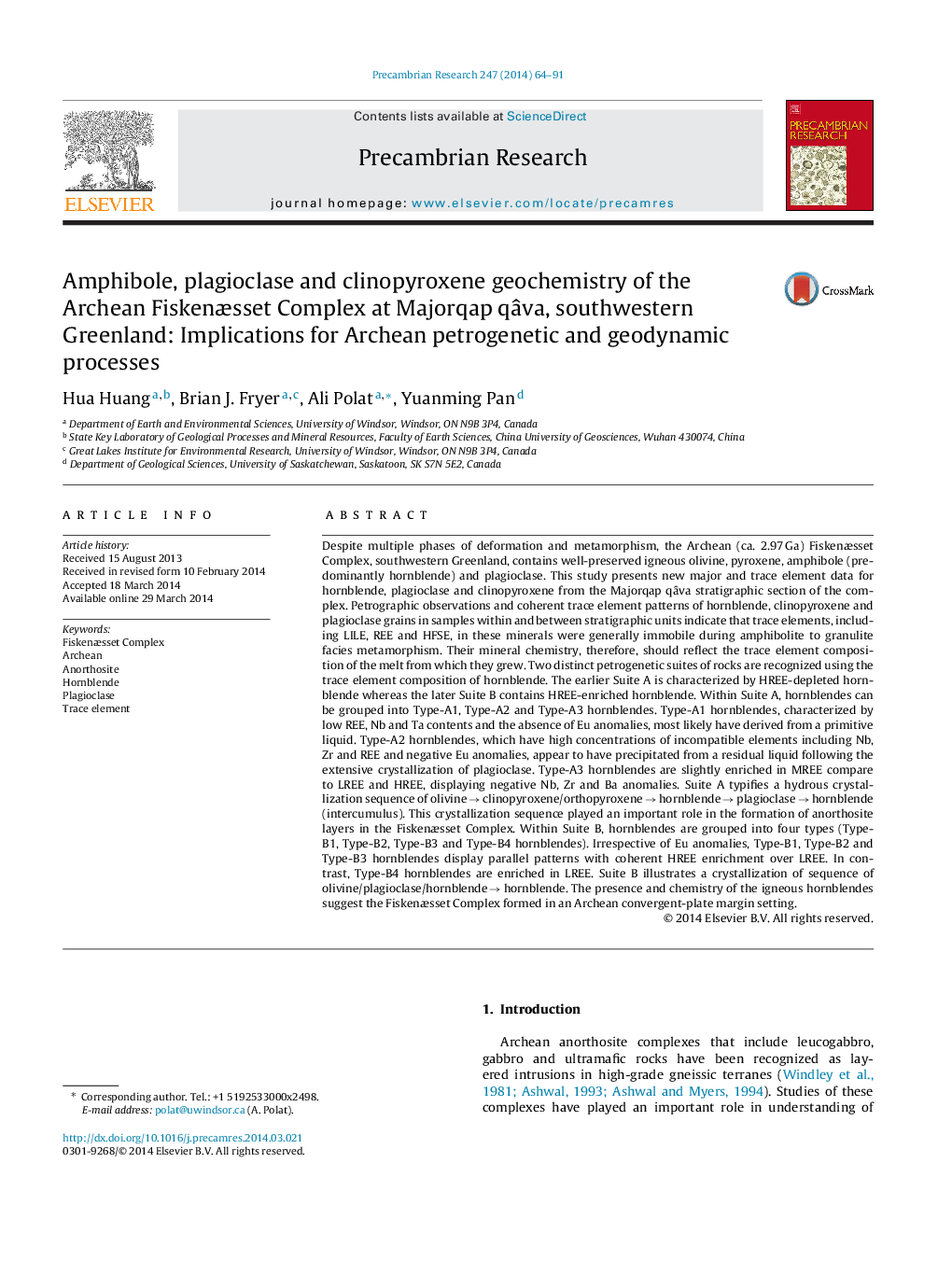| کد مقاله | کد نشریه | سال انتشار | مقاله انگلیسی | نسخه تمام متن |
|---|---|---|---|---|
| 4723103 | 1639627 | 2014 | 28 صفحه PDF | دانلود رایگان |

• The Archean Fiskenæsset Complex, SW Greenland, contains well-preserved igneous minerals.
• The complex underwent amphibolite to granulite facies metamorphism.
• Trace elements were immobile on mineral scale during metamorphism.
• Two distinct petrogenetic suites of rocks are recognized based on hornblende composition.
• The trace element systematics of hornblendes suggest complex formed at a convergent-plate margin.
Despite multiple phases of deformation and metamorphism, the Archean (ca. 2.97 Ga) Fiskenæsset Complex, southwestern Greenland, contains well-preserved igneous olivine, pyroxene, amphibole (predominantly hornblende) and plagioclase. This study presents new major and trace element data for hornblende, plagioclase and clinopyroxene from the Majorqap qâva stratigraphic section of the complex. Petrographic observations and coherent trace element patterns of hornblende, clinopyroxene and plagioclase grains in samples within and between stratigraphic units indicate that trace elements, including LILE, REE and HFSE, in these minerals were generally immobile during amphibolite to granulite facies metamorphism. Their mineral chemistry, therefore, should reflect the trace element composition of the melt from which they grew. Two distinct petrogenetic suites of rocks are recognized using the trace element composition of hornblende. The earlier Suite A is characterized by HREE-depleted hornblende whereas the later Suite B contains HREE-enriched hornblende. Within Suite A, hornblendes can be grouped into Type-A1, Type-A2 and Type-A3 hornblendes. Type-A1 hornblendes, characterized by low REE, Nb and Ta contents and the absence of Eu anomalies, most likely have derived from a primitive liquid. Type-A2 hornblendes, which have high concentrations of incompatible elements including Nb, Zr and REE and negative Eu anomalies, appear to have precipitated from a residual liquid following the extensive crystallization of plagioclase. Type-A3 hornblendes are slightly enriched in MREE compare to LREE and HREE, displaying negative Nb, Zr and Ba anomalies. Suite A typifies a hydrous crystallization sequence of olivine → clinopyroxene/orthopyroxene → hornblende → plagioclase → hornblende (intercumulus). This crystallization sequence played an important role in the formation of anorthosite layers in the Fiskenæsset Complex. Within Suite B, hornblendes are grouped into four types (Type-B1, Type-B2, Type-B3 and Type-B4 hornblendes). Irrespective of Eu anomalies, Type-B1, Type-B2 and Type-B3 hornblendes display parallel patterns with coherent HREE enrichment over LREE. In contrast, Type-B4 hornblendes are enriched in LREE. Suite B illustrates a crystallization of sequence of olivine/plagioclase/hornblende → hornblende. The presence and chemistry of the igneous hornblendes suggest the Fiskenæsset Complex formed in an Archean convergent-plate margin setting.
Figure optionsDownload as PowerPoint slide
Journal: Precambrian Research - Volume 247, July 2014, Pages 64–91